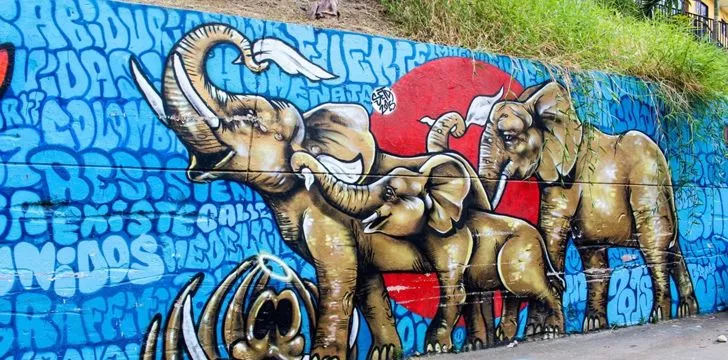Graffiti is a complex and multifaceted cultural creation. Its history stems from many centuries; hence, it has become an essential mode of expression, social commentary and a medium of cultural identity. It’s a separate independent art form with particular techniques, styles and visual languages of expression. Graffiti murals show the same level of detail, precision and creativity as many traditional art forms.
Graffiti’s dynamism is one of its characteristic features.
Outdoor graffiti is often temporary because it can be worn away by the elements and damaged by vandals or law enforcement. Thus, each creation is a brief masterpiece which presents itself as a beautiful artwork for only a moment before changing or vanishing. At the same time, graffiti undermines the traditional notions of what constitutes art, particularly about permanency and conservation.
Graffiti goes beyond the traditional boundaries of artistic expression and comprises a wide range of art forms from realistic images to abstract designs. Artists get an opportunity to experiment and develop something new, which broadens the scope of the definition of art and challenges the usual perceptions.

Most graffiti artists use their art to respond to social concerns, a platform to educate the world and push for transformation. Graffiti is frequently seen as a visual revolt against the absence of fairness, justice and oppression in marginalized areas.
In addition, underprivileged groups may use graffiti to voice their tales and commemorate their culture. Such murals would enhance a community’s cultural identity while encouraging the members to appreciate their heritage and rituals and fight against oppression. For this reason, graffiti is essential in safeguarding an individual’s culture and identity and standing up to globalization’s tendency to homogenize things.
Hip-hop culture also has a link with graffiti in the world of music. As urban landscapes, these are shared by graffiti artists and hip-hop musicians in their collaborations. Graffiti may appear not only on record sleeves and video covers; lyrics of hip-hop songs often speak about social inequality, social identity, and urban experience.
Moreover, advertisers and marketers realize graffiti can speak directly to young urban audiences. However, street art aesthetic appeals are frequently used in advertising campaigns to convey street authenticity and credibility, but at times, they may appear as the commodification of a subculture.
Summary
Graffiti has changed over time as societal norms and politics continue to evolve, and it prospers. Today, whether graffiti might be a challenge for society or just a colorful illustration, it is a significant manifestation of expression in contemporary society. It is not simply a series of images it puts forth on the walls; its essence is reflected through the conversations, emotions and thoughts evoked by this interaction.
